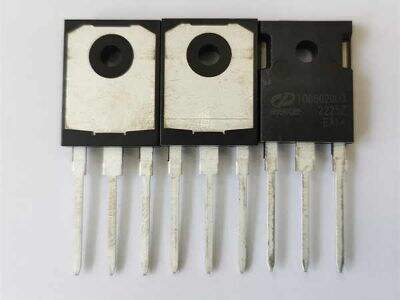When choosing parts to develop electronic devices, one essential realization is the comparison between two ordinary transistors: 1200V SiC and Si MOSFETs. There are two kinds of transistors that function differently, and they are involved in the performance of the device. Picking the correct one can significantly influence how efficiently the device performs.
What is a 1200V SiC transistor
SiC MOSFETs possess a greater breakdown voltage compared to Si igbt and can function at much higher temperatures than silicon MOSFET. This renders them suitable for application in high-power requiring applications such as electric vehicles and solar power systems. These systems require devices that can safely and efficiently function in harsh conditions. On the other hand, silicon MOSFETs have been used comprehensively over time in millions of consumer electronics. You see them in so many gadgets because they are typically less expensive and simpler to manufacture.
How do they work?
The performance of a transistor is essential to determine how effectively it can regulate the flow of electricity within a device. Since SiC transistors carry a much lower resistance, it is easier for electricity to flow through them. They turn on and off more quickly than silicon MOSFETs as well. This enables them to use less total energy and produce less heat when they are operating. That is why SiC transistors are able to be partially more efficient. Silicon MOSFETs, however, may become too hot and need extra coolers in the hope of not overheating. That way, when electronic devices are being made, it also has a notion of what it must fit into.
How efficient are they?
And efficiency is the level to which a program, service, product, or organization does what it intends to do. This transistor is SiC, which is efficient compared to silicon MOSFET. SiC transistors' reduced resistance and speed make devices operate with better performance while using less energy. That equates to being able to pay less in power bills in the long run through SiC transistors. It's something like a low-energy light bulb that still illumines the room!
What to compare between the two?
There are some important features to compare between 1200V SiC and silicon MOSFETs. These are the voltage that they can withstand, the temperature that they can withstand, their switch speeds, and their efficiency in power. In all these, SiC transistors are generally better than their silicon MOSFET alternatives. This makes them ideal for use in applications where high power and reliability are utmost important, like in electric vehicles and renewable energy systems.
Why does this choice matter?
The sacrifice between 1200V SiC and silicon MOSFETs might be a design choice having a far-reaching effect on system performance. Engineers can thus develop electronics that are more efficient and dependable by choosing SiC transistors. This enables such devices to operate at increased voltages and temperatures, leading to improved overall system performance. Selecting the appropriate transistor, however, might also slash energy consumption, and that is good for the environment as well as minimizing costs for customers.
Lastly, if you are considering 1200V SiC or silicon MOSFETs led in car headlights to use in your electronics, fully analyze what the system requires and how efficiently it is supposed to function. If you don't mind additional expenditure and saving through the use of the transistor, utilize 1200V SiC transistors because they are in general more energy efficient which at long last augments the whole functionality of your devices more compared to silicon MOSFET will in certain scenarios. I hope this wee morsel has enlightened you to that next Electronic Device agent you're developing and actually assisted you in making that 1200V SiC or silicon MOSFET choice to suit that design you're developing.
 EN
EN
 AR
AR
 HR
HR
 DA
DA
 NL
NL
 FR
FR
 DE
DE
 EL
EL
 HI
HI
 IT
IT
 JA
JA
 KO
KO
 NO
NO
 PL
PL
 PT
PT
 RO
RO
 RU
RU
 ES
ES
 SV
SV
 TL
TL
 IW
IW
 ID
ID
 LT
LT
 SR
SR
 SK
SK
 UK
UK
 VI
VI
 SQ
SQ
 HU
HU
 TH
TH
 TR
TR
 FA
FA
 AF
AF
 MS
MS
 HY
HY
 BN
BN
 LA
LA
 TA
TA
 TE
TE
 MY
MY

